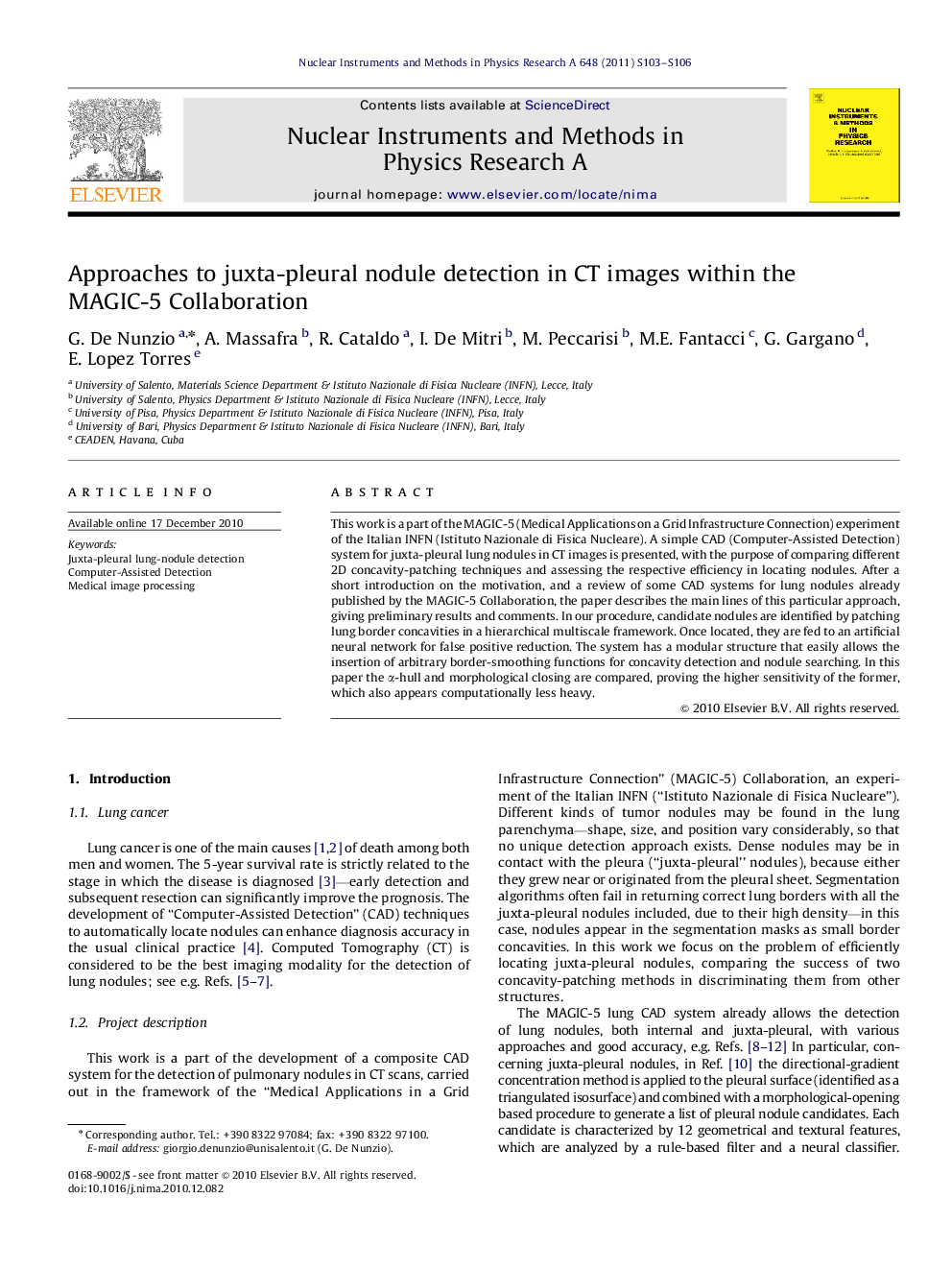| Article ID | Journal | Published Year | Pages | File Type |
|---|---|---|---|---|
| 1824789 | Nuclear Instruments and Methods in Physics Research Section A: Accelerators, Spectrometers, Detectors and Associated Equipment | 2011 | 4 Pages |
This work is a part of the MAGIC-5 (Medical Applications on a Grid Infrastructure Connection) experiment of the Italian INFN (Istituto Nazionale di Fisica Nucleare). A simple CAD (Computer-Assisted Detection) system for juxta-pleural lung nodules in CT images is presented, with the purpose of comparing different 2D concavity-patching techniques and assessing the respective efficiency in locating nodules. After a short introduction on the motivation, and a review of some CAD systems for lung nodules already published by the MAGIC-5 Collaboration, the paper describes the main lines of this particular approach, giving preliminary results and comments. In our procedure, candidate nodules are identified by patching lung border concavities in a hierarchical multiscale framework. Once located, they are fed to an artificial neural network for false positive reduction. The system has a modular structure that easily allows the insertion of arbitrary border-smoothing functions for concavity detection and nodule searching. In this paper the α-hull and morphological closing are compared, proving the higher sensitivity of the former, which also appears computationally less heavy.
